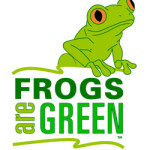Last week I wrote about Atrazine, an endocrine disruptor used widely in pesticides. These chemicals, which mimic human hormones, have been connected with genital deformities in fish, frogs, and possibly newborn baby boys.
This week I’m writing about endocrine disruptors in products a bit closer to home: skin creams, shampoos, deodorants, sunscreens, and other cosmetics and personal-care products. According to the Campaign for Safe Cosmetics site, endocrine disruptors such as phthalates that are used in cosmetics, “interfere with reproductive functioning by reducing the levels of sex hormones, which are critical for development and functioning of the sex organs. Additional research suggests that these same mechanisms may link phthalates to breast cancer.”
In his book Safe Trip to Eden, David Steinman writes about phthalates:
Because phthalates aren’t always strongly bonded to the materials to which they’ve been added, they can be absorbed through the human body through inhalation or the skin. The body’s largest organ, the skin is an exceptional vehicle for absorption of phthalates via cosmetics and personal care products, enabling their passage into the body without passing through the harsh environment of the gastrointestinal tract or without first passing through the liver, the body’s main detoxifying organ.
I decided to take a trip to CVS to see if I could find products without these chemicals. But virtually every cosmetic and personal-care product I found from shampoo to skin moisturizers, nail polish to sunscreen contains these or other similar chemicals.
I use a shampoo called Aveeno, Active Naturals with Nourishing Wheat Complex and Blue Lotus Flower. It’s in an earthy brownish bottle with images of wheat stalks on it. So it’s natural, right? No. It’s full of chemicals—a real chemical soup actually.
I also use a skin cream called Origins: A Perfect World, Intensely Hydrating Body Cream with Green Tea. The cream came in a very upscale-looking box wrapped with twine and recyclable green packaging. This cream isn’t as natural as it claims either. It’s manufactured by Estee Lauder and gets a so-so rating on the Environmental Working Group’s Skin Deep Cosmetic Safety Database. (You can search almost any product here.) In fact, I found that some of the budget generic CVS skin creams get a better rating on the database than the pricey Origins.
I finally found some products at CVS that didn’t have chemicals—the Burt’s Bees products—but they weren’t in the cosmetics aisle. Feeling virtuous and frog-friendly, I plopped down $17.99 for Burt’s Bees Radiance SP 15, Day Lotion with Royal Jelly. On the container it says, “Never any Sulfates, Parabens, Phthalates, or Petrochemicals.” Great, right? Well, I used it and, unfortunately it contains a chemical-smelling fragrance, which to my sensitive nose, was so strong I couldn’t use the cream. Evidently cosmetic companies aren’t required to list ingredients in fragrances. So beware when it says “fragrance” as one of the ingredients.
I finally gave up and went to the local health food store. I found lots of chemical-free cosmetics and personal care products there. I ended up with Aubrey Organics, Rosa Mosqueta, Rose Hip, Moisturizing Cream. It has a nice almondy smell that reminds me of Jergens. Ingredients include aloe vera, sweet almond oil, and rose hip oil—and not one chemical!
I’m not saying you have to throw out all your cosmetics, but I would at least be aware of how products are marketed to seem natural or organic when they aren’t at all. Read the labels. Check your cosmetics in the Skin Deep database to see how they rate (note: they also have user reviews of cosmetics). And consider switching to chemical-free organic products. I welcome any feedback about natural cosmetics you’ve used and can recommend to others.
For more information: from Scientific American magazine, “Saving Face: How Safe Are Cosmetics and Body Care Products” and from The Daily Green, “How to Go Green: Nature Skin Care.”
*I got the title of this post from a post by John Laumer on Tree Hugger,”There’s a Frog Disruptor in your Soap,” which discusses the possible dangers of the chemical triclosan in soaps and other products.





#
Lisa Sniderman
Lisa Sniderman you
Owner, Aoede Singer/Songwriter, Performer, Recording Artist
Exactly! Maybe alert your readers to Environmental Working Group-Skin Deep Cosmetic Safety Database: http://www.cosmeticsdatabase.com/ (oh-I see you’ve done this above! Excelent)
so they can do their own research-and thanks for writing about this and informing more people! Let me know if there are ways we can help as musicians promote this cause…in ways that haven’t been done before-I’ve had friends put on shows and combine a slide show about the issue with panelists for example…other ideas? I’m looking to try to combine enviro/toxics issues and music…
Thank you for bringing attention to these issues!
Aoede-muse of song
http://www.aoedemuse.com
Dear Lisa,
Thanks so much for your comment. Mary Jo and I will discuss ways you might be able to help our cause. We will talk with you again soon. Susan
Has there been a large study done to definitely prove that this is true? I don’t see much on the FDA web site that has been updated in May of this year. http://www.fda.gov/Cosmetics/ProductandIngredientSafety/SelectedCosmeticIngredients/ucm128250.htm
From what I’ve learned, cosmetics are not subjected to rigorous standards by the FDA, although this is changing, with enough public pressure (for example, many companies have voluntarily removed phthalates and other chemicals from their products. See the Campaign for Safe Cosmetics site above for more information about this). The Environmental Working Group did a study (http://www.ewg.org/reports/teens) that showed that teens had high levels of these chemicals in their bloodstream. The Rachel Carson Homestead is sponsoring a conference this fall about endocrine disruptors called “When Chemical Disrupt: Managing Our Risks.” According to the website, they “will seek an open dialogue with the objective of identifying a set of mechanisms that can have rapid effect on the control of endocrine disrupting substances flowing into the environment as bio-accumulating contaminants. Mounting scientific evidence on a global scale compels immediate and effective action. However, there is widespread disagreement on the best course of action, and in particular, on the role of regulation in accomplishing change.” Various speakers from industry and government will participate in conference. While there have been studies (see David Steinman’s book, Safe Trip to Eden, which references several studies), I’m not sure there is definite proof, except perhaps of the effects of these chemicals on animals. Almost all smallmouth bass in the Maryland/Washington, DC area are now “intersex”–having both male and female characteristics, and most scientists agree this is due to endocrine disruptors in the water. So I am trying to find areas of my life where I can comfortably switch to nonchemical products. I think it’s important to be aware of the issue.
Glad to see this coming to people’s attention. I teach Environmental Science and am trying to put together a lesson on this. I plan on having students research the different chemicals, but need to find a listing of those chemicals. Any suggestions?
Dear Kara,
Thanks so much for your response. We will get back to you shortly.
Susan
Hi Kara–
Here are two sites: The Environmental Working Group (http://www.ewg.org/chemindex), which has a list of chemicals with possible toxic effects. I also find the Rachel Carson Homestead site helpful as it includes lots of easy-to-understand educational material about different types of chemicals. (http://www.rachelcarsonhomestead.org/RachelCarsonsLegacy/RachelCarsonsLegacyResources/tabid/125/Default.aspx). I will keep my eye out for other material that you might find helpful.
Mary Jo
Good evening .
I have something to say, about aloe vera, something about which you wrote above, about health and personal care… For a long time, I and my good friend use the products of the forever living company. We many times see the fine results and also we make money for our families and we are happy. My friend works with Aloe vera in the company of FLP has more than 5 years (My friend works ONLY in the forever living products company and has a wife and three children). I know aloe products for weight management for a long time, but a year ago, began working as a distributor in the forever living products company.
Of course, the job is so hard, but in no other case, You can earn so much much money with so much fun and good smiling faces around…
So if you want to discuss something about your post, and about my experience with AloeVera products for skin care, I’ll always be glad to talk.
Best regards from Washington and have a nice day!
Andrew – Aloe Vera Distributor
P.S. frogsaregreen.com – THE BEST!!!